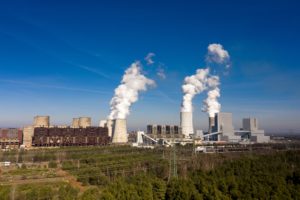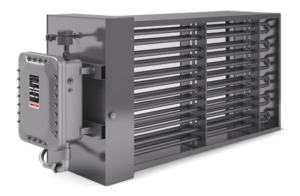Applications and Considerations For Air Intake In Nuclear Power Plants
Last updated on November 2nd, 2022 at 03:15 pm
![]()
 The air intake in the nuclear power plant plays a significant role in the safety of people. While maintaining the operational integrity of the plant. The air intake is conditioned and used for three important purposes:
The air intake in the nuclear power plant plays a significant role in the safety of people. While maintaining the operational integrity of the plant. The air intake is conditioned and used for three important purposes:
- Heating
- Ventilation
- Air conditioning, also known as HVAC. That services air and instruments to operate safety-critical and non-safety critical pneumatic valves and actuators.
This article focuses on the design considerations for air supply and the applications within a nuclear power plant. Applicable to Evolutionary Power Reactor or European Pressurized Reactor or EPR, Pressurized Water Reactor or PWR, Boiling Water Reactor or BWR.
However, the implications of the failure in instrument air, service air, or conditioned air for HVAC on reactors would differ due to differences in construction and interlocks.
Instrument Air Conditioning
Nuclear energy is produced by the fission of Uranium235, which requires appropriate fission products and processes that will contain the energy acceptably. Without posing any safety threats or hazards to people and instruments due to radiation. In some nuclear power plants, compressed air is used to operate equipment that ensures the safe shut down of the plant in any event of an emergency. Ensuring that the radioactive contaminants are prevented from bypassing any barriers in place.
However, that is not the case in most nuclear power plants. As most of the valves and equipment are required for safe shut down, it is also operated by motorized actuators connected to multiple backup generators in case of a power outage due to an emergency event.
Just like any industrial set up, compressed air is used to drive pneumatic tools and pumps, known as service air. Usually, the service air system is different compared to the instrument air however it can be used as a back to instrument air. One thing to take note is that quality requirements for service air are less stringent compared to the instrument air so some moisture and oil are permitted in service air.
Conditioning of the air before compression is very important because presence of moisture can result in obstruction in operation of pneumatic control systems. Compressed Air Nuclear Users Group (CANUG) recommends that there should be three redundant instrument air systems which will allow one design to be in maintenance. At the same time, the other two would be configured in run and standby mode. Each system consists of the following sub systems:
- A compressor: Usually, these reciprocating compressors can be combined with the service air compressor. This can also supplement the primary system if more capacity is required without operating the standby and under maintenance compressor systems. It is common for the service air compressors to be rotary screw compressors rather than the reciprocating compressor.
- Inter and aftercooler
- Wet receiver
- Pre-filter or mist eliminator
- A heated Regenerative desiccant Dryer: This could be an internally heated regenerative dryer with an electric immersion heater with axial elements inserted into the desiccant bed. The electric immersion heaters are banded to the vessel’s Shell in different types of internally heated configurations, containing the beds of desiccant. As a rule of thumb, the heating elements should not be more than 4 inches apart because the desiccant is thermally refractive. Therefore, close spacing is required to achieve temperatures of 1000°F for regeneration.
Dry purge air is required with 6% moisture to evenly distribute the heat to the desiccant bed. Any interruption in the supply of the dry purge air results in condensation on the internal surfaces of the vessel due to low vapor pressure. The electric immersion heater is installed externally in a separate heat exchanger for the externally heated regenerative dryer. That directly heats the desiccant. The air is passed over the heating element to absorb energy and circulates through the desiccant bed. Although this system works fine at atmospheric pressure, lower pressure improves efficiency.
- After filter
To further improve the reliability of the compressed instrument air system. Cross connections between the three systems and service air systems are recommended. Along with keeping the load on the compressor, not more than 75%, and with redundant control systems so that failure of one controller won’t hamper the other.
As per CANUG recommendations, the heatless desiccant air dyer shall be used due it’s simpler design and better reliability. In comparsion to the internally or externally heated desiccant dryers with purge air system. However this is usually accompanied by higher Lifecyle costs and an increase the total cost of ownership. Which is also why some nuclear power plants still use the later.
Ventilation Systems
 In a Nuclear Power Plant, the Heating, Ventilation and Air Conditioning (HVAC) systems serves two purposes:
In a Nuclear Power Plant, the Heating, Ventilation and Air Conditioning (HVAC) systems serves two purposes:
- Provide acceptable and comfortable working conditions for the plant personnel. Including maintaining the purity, temperature, and humidity especially in the control room where precise humidity and temperature control is important. Especially due to the presence of sensitive electronics, analyzers, and computers.
- The second purpose is to make sure that equipment’s, components, and structures are maintained in an environmental condition. That prevents the degradation and corrosion of equipments.
Furthermore, the HVAC system encompasses all the necessary interlocks and scrubbing equipment to reduce the radiation exposure from plant operation or in the case of emergency event. HVAC systems installed at the nuclear power plants act as last line of defense in the event of radiological release or nuclear disaster. They mechanically remove the particulate matter and chemically scrub the radioactive gases. One example of such chemical and mechanical cleaning systems is High efficiency particulate absolute (HEPA) filter to remove particulate matter. Each filter is required by the regulation to be tested to remove 99.97% of the particulate matter. While activated carbon filters will scrub the radioactive matter like iodine 131 which causes thyroid cancer.
Usually, the nuclear power plant is divided into ventilation zones and the pressure differential is determined and checked periodically for airflow from uncontrolled areas to controlled areas. The classification are based upon fire compartmentalization. That require accessing room or area during operational situations and accident conditions and risk posed if there is a radioactive release from systems located in those rooms or areas. The exhaust air from controlled areas is extracted to the environment through leak tight ducts to the plant ventilation stack and if there is a risk that presence of radioactive matter is higher compared to regulatory limits then mechanical and chemical filters need to be employed for scrubbing the air.
